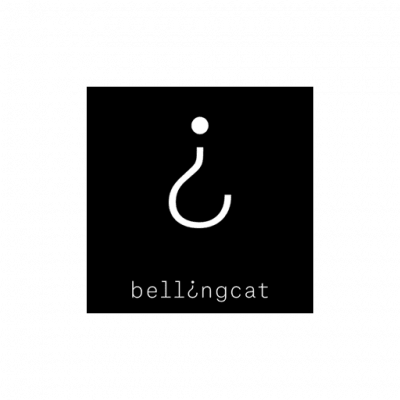About CEDMO
The Central European Digital Media Observatory (CEDMO), as an independent non-partisan multidisciplinary hub, aims to identify, research and prioritise the most critical sources and causes of information disorders in Central Europe (mainly the Czech Republic, Slovakia and Poland). This international consortium was created to propose a set of short and longer-term actions, as well as recommendations to help civil society, public institutions and the private sector respond to the declining trust in key institutions and help society to resist the effect of increasing exposure to mis- and disinformation.
By interacting and coordinating with European Digital Media Observatory (EDMO) and other regional EDMO hubs in EU, CEDMO will contribute to curbing threats posed by information disorders, including disenchantment with the democratic processes, and discord in civil society in Europe, and to building community and nation-wide resilience while protecting information ecosystems.
About CEDMO
The Central European Digital Media Observatory (CEDMO), as an independent non-partisan multidisciplinary hub, aims to identify, research and prioritise the most critical sources and causes of information disorders in Central Europe (mainly the Czech Republic, Slovakia and Poland). This international consortium was created to propose a set of short and longer-term actions, as well as recommendations to help civil society, public institutions and the private sector respond to the declining trust in key institutions and help society to resist the effect of increasing exposure to mis- and disinformation.
Our Partners
About CEDMO
The Central European Digital Media Observatory (CEDMO), as an independent non-partisan multidisciplinary hub, aims to identify, research and prioritise the most critical sources and causes of information disorders in Central Europe (mainly the Czech Republic, Slovakia and Poland). This international consortium was created to propose a set of short and longer-term actions, as well as recommendations to help civil society, public institutions and the private sector respond to the declining trust in key institutions and help society to resist the effect of increasing exposure to mis- and disinformation.
Our Partners
“Scientists found MASSIVE increased risks of developing several serious health conditions post-jab,” claims a February 23, 2024 Facebook post with a video of Del Bigtree, head of one of the best-funded anti-vaccine organizations in the United States.
Since Elon Musk’s turbulent 2022 acquisition of X, formerly Twitter, the site has restored thousands of once-banned accounts and introduced a paid verification system that critics say has boosted conspiracy theorists.
“How many times did Israel save the same hostage?” asks the text of February 12, 2024 post on X, formerly Twitter, with more than 19,000 likes.
“French embassy is set on fire in Democratic Republic of Congo,” reads a post published on X on February 11, 2024.
“In Pfizer’s own document. Trying to knock down the population…. Well they are doing it. Someone tell Celine Dion because you know the doctors will deny it has anything to do with medication’s or vaccines even if it’s on their list of side effects,” says a December 10, 2022 Instagram post.
“Evidence Suggests the COVID Shots Are Responsible for Soaring RSV Cases Throughout the U.S. & Canada,” says a November 3, 2022 Instagram post.
The false post was shared by an India-based Facebook user on August 26, 2022.
“Zelensky Is DITCHING Ukraine for America,” says the caption of a December 21, 2023 TikTok post from Clayton Morris, a podcaster and former Fox & Friends host.
A flood of real images from Israel and Gaza has been revealing the horrors of the conflict that broke out on October 7 when Hamas militants launched an unprecedented attack on southern Israel, but they can vie for attention with misappropriated scenes from Syria’s civil war.
“OLD PALESTINIAN MAN PLEADS WITH ISRAELI SOLDIERS NOT TO CUT THE OLIVE TREE HE GREW & SAYS SHOOT HIM INSTEAD,” says a December 20, 2023 post sharing the short clip on X, formerly Twitter. “SO SAD, MONSTERS.”
In a Facebook video shared January 16, 2023, Mike Adams instructs viewers to “take a standard nebulizer” and inhale hydrogen peroxide and a small amount of iodine.
The video criticizes activists, politicians and the media for treating 2030 as a “cliff edge” for climate catastrophe — and for suggesting there are “12 years left to save the world,” a claim that traces back to when the UN report was released in 2018.
“In Pfizer’s own document. Trying to knock down the population…. Well they are doing it. Someone tell Celine Dion because you know the doctors will deny it has anything to do with medication’s or vaccines even if it’s on their list of side effects,” says a December 10, 2022 Instagram post.
“FESTIVAL ATTENDEES RUNNING FOR THEIR LIVES #PRAYFORISRAEL,” says text over an October 7, 2023 TikTok video, which shows a crowd of people rushing through a gated area.
“Why would mosquitoes have serial numbers unless they’re used as a bio weapon. We are under full attack,” says a post shared to Gettr, a conservative social media platform, on September 22, 2023.
“OOPS: Billboard in New York accidentally greets Zelenskyy with ‘Glory to Urine’ instead of ‘Glory to Ukraine,'” said a September 21, 2023 post sharing the 6-second clip on X, the site formerly known as Twitter.
“The Russian army used thermobaric weapons again,” reads thistweet, which shared a video on March 3, 2022.
“The video shows the Ukrainian army preparing a prop for a staged shooting,” reads a simplified Chinese post on April 7 on Weibo, China’s Twitter-like platform.
The Moskva, the Russian navy’s Black Sea flagship, sank on April 14, 2022 after an explosion on board that Ukraine and the United States said was caused by a missile strike, and Moscow said was caused by a fire igniting ammunition.






































